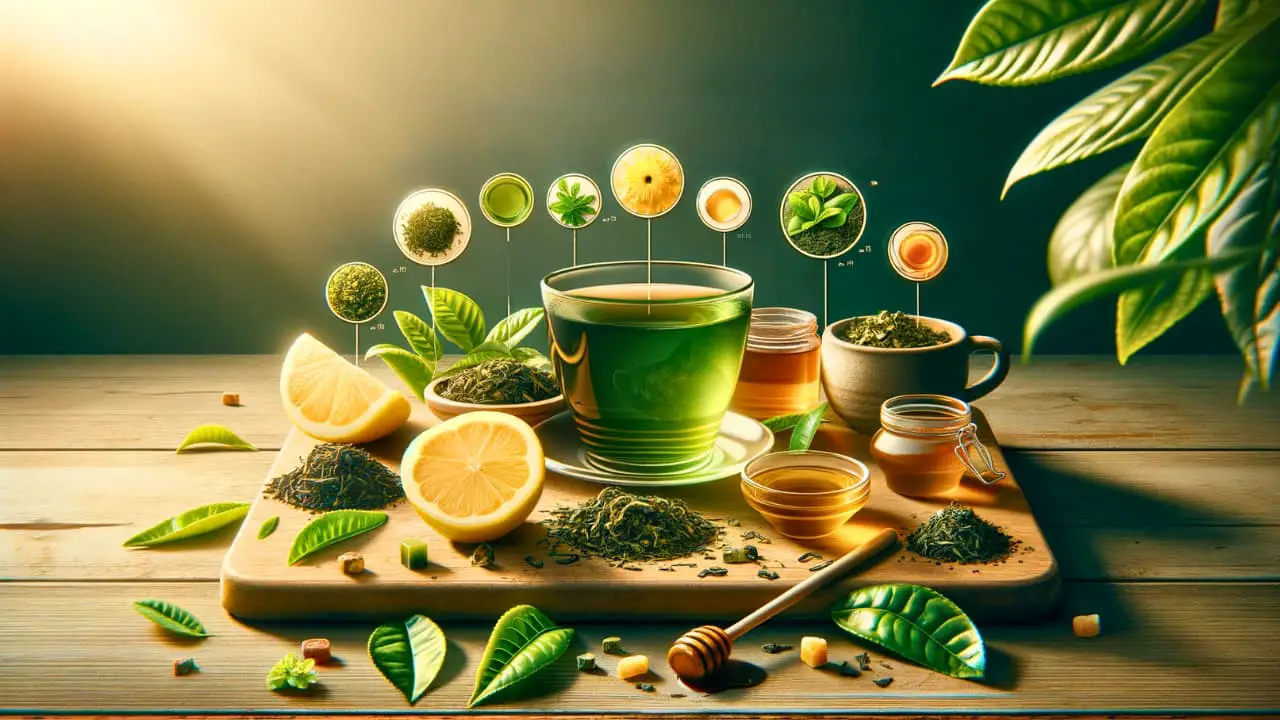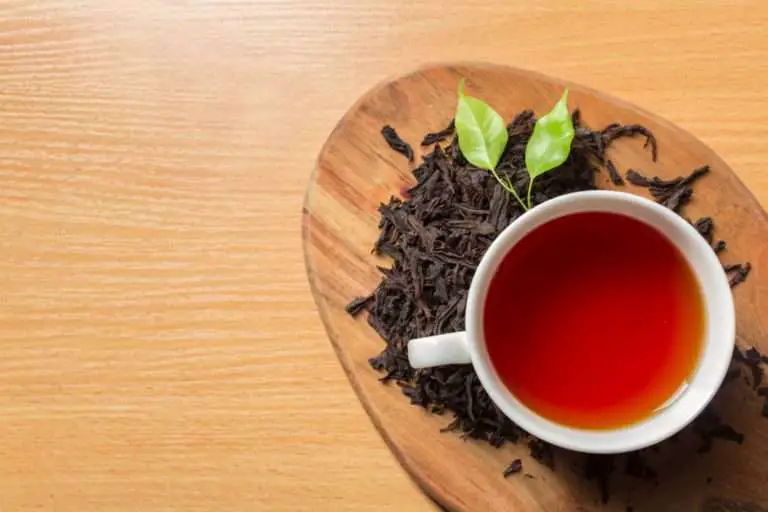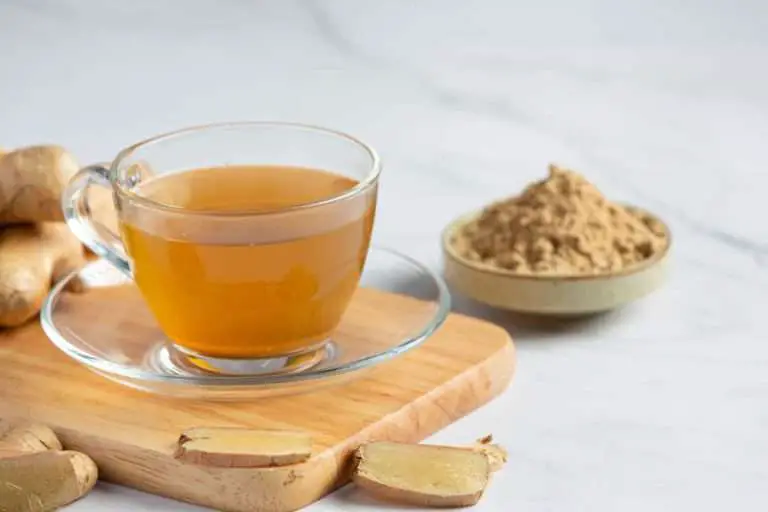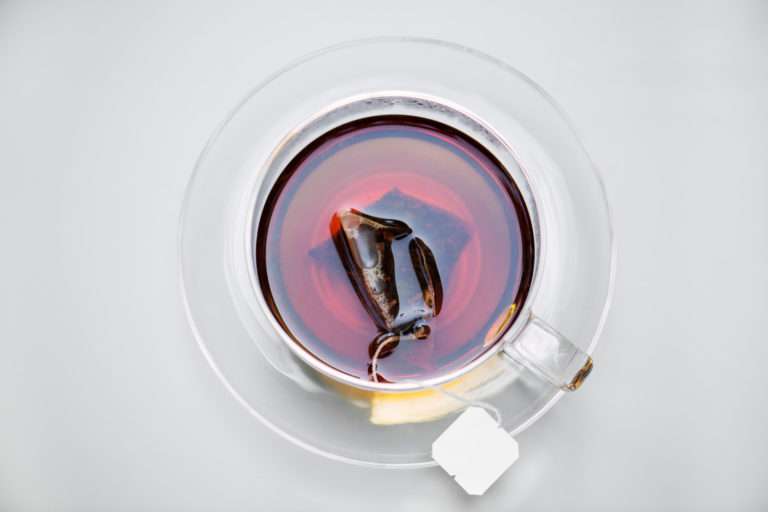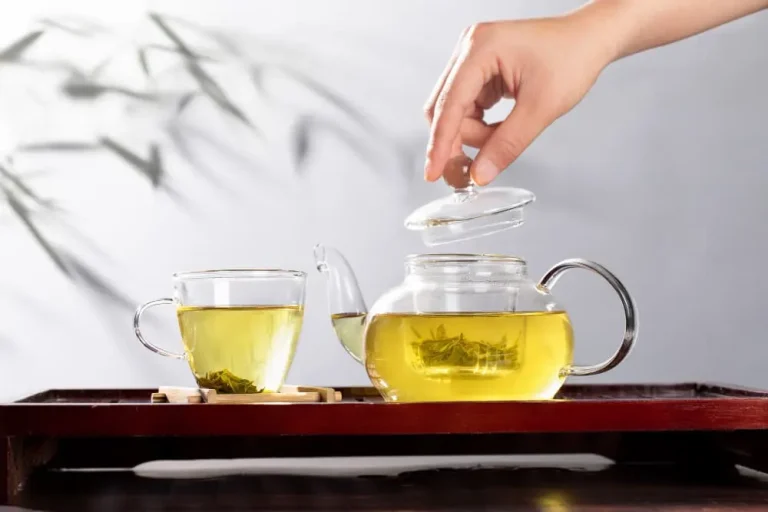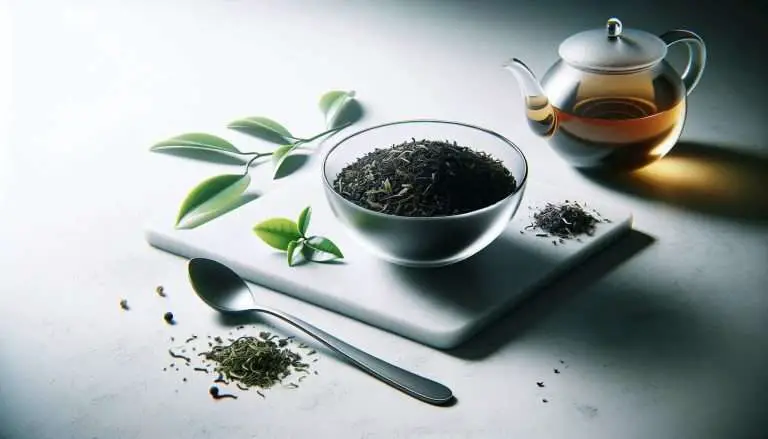Discover 25 Green Tea Taste Solutions: From Metallic to Grassy
Discover key Green Tea Taste Solutions in our 25-part guide. We tackle common green tea flavor issues, from fishy to chlorine tastes, and cover adjustments like adding lemon or honey.
Learn effective storage and steeping techniques to enhance flavor, fix problematic tastes, and highlight your favorite notes. Dive into the complexities of green tea and find out how to make every cup enjoyable.
Key Takeaways
- Quality matters. High grade loose leaf green tea has a better taste and aroma profile than lower tier bagged teas or stale leaves. Choosing fresh, well-sourced leaves prevents unappealing flavors.
- Storage technique impacts shelf life and taste over time. Keeping green tea properly sealed in cool, dark places retains flavors and freshness for longer.
- Brewing methods extract different levels of compounds that influence flavor. Adjusting water temperature, steeping time, filtration methods, and leaf ratio changes taste significantly.
- Certain flavors come down to the individual tea type and harvest origin. Researching production methods helps select the right green tea variety for your preferences.
- Adding components like lemon, honey or specific water may balance unwanted flavors in some green teas resulting in a more enjoyable cup.
1, Why Does My Green Tea Taste Burnt?
Sometimes green tea can taste burnt or bitter. This happens when the water is too hot or the tea steeps for too long.
Green tea gets a burnt flavor when it is heated above 80°C or 175°F. Water this hot scorches the delicate green tea leaves. It brings out bitter, unpleasant flavors.
To avoid a burnt taste, do not let your water boil. Take it off the heat when tiny bubbles start to form on the bottom of the pot or kettle. For the best flavor, steep green tea using water between 60-80°C or 140-175°F.
Also, do not leave your green tea to steep for more than 2-3 minutes. This allows more bitter tannins to enter the cup. Follow steeping guidelines on the package so your green tea tastes pleasant, not burnt. Letting it gently steep in water that is not too hot is the key.
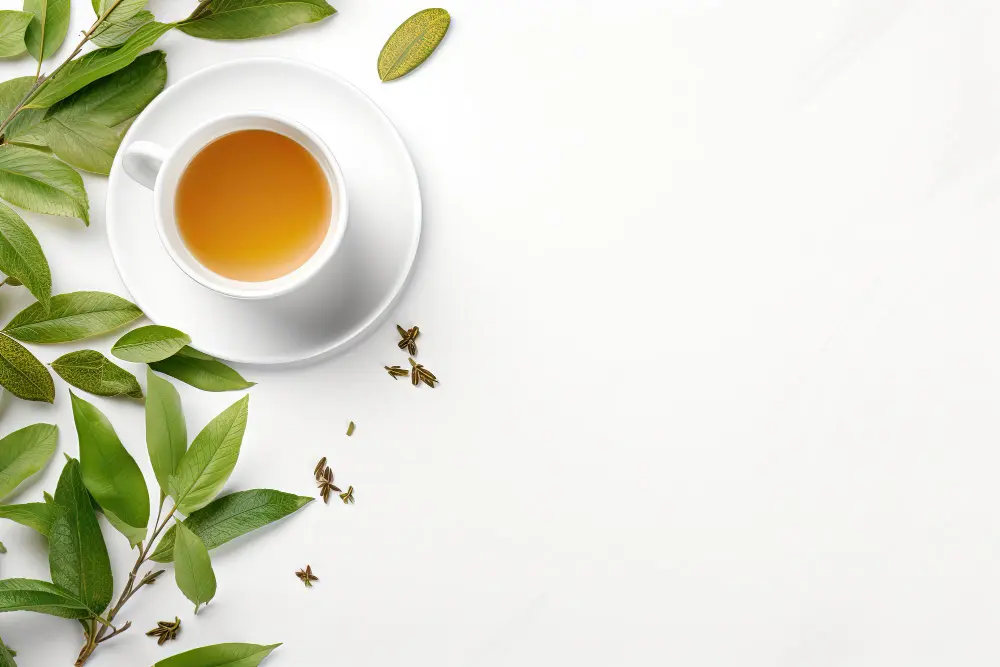
2, Why is My Green Tea Bitter After Steeping?
Bitterness in green tea usually comes from steeping it the wrong way. Using water that is too hot or letting the tea steep too long makes it taste bitter and unpleasant.
The best temperature for green tea is between 140-175°F, before the water boils. Boiling water is too hot and scalds the delicate tea leaves. It pulls out more bitterness and astringency from the leaves.
Likewise, steeping time matters. Most green teas should steep for just 1-3 minutes max. Steeping any longer releases more tannins that make your tea taste bitter. Follow the package directions for proper steeping times.
You can also experiment with using slightly cooler water and less steeping time if your green tea is still too bitter. Finding the optimal balance helps bring out the natural sweetness of high quality leaves without over-extracting bitterness.
Pay attention while steeping and taste occasionally for your preferred smoothness and flavor.
- NATURALLY CAFFEINATED GREEN TEA K-CUP PODS: One box of 24 Green Tea Pods; Twinings blend of fine green tea has just the…
3, Why Does My Green Tea Taste Fishy?
A yucky fishy flavor means your green tea has gone bad. This happens when the dry leaves get contaminated by strong odors and flavors around them.
Green tea leaves easily soak up tastes and smells from being near other foods. They also can go bad with improper storage in places that are too hot, humid, or damp.
The best way to avoid fishy-tasting green tea is to buy high quality loose leaves or bags. Ask the seller how they harvest and store their tea. Some high-end teas like gyokuro come refrigerated to stay very fresh.
Also read reviews online to help find stores that care about freshness. And always sniff dry tea before brewing.
If it smells funny or ocean-like, the flavor will likely taste that way too when mixed with hot water. Pay a little extra for better quality so you don’t end up with stinky tea!

4, Why Does My Green Tea Taste Metallic?
Sometimes green tea can have a strong metallic flavor, almost like licking a coin! This unpleasant taste is usually caused by the tea reacting with your cookware or water.
Using an iron or copper kettle can cause a reaction that makes green tea taste metallic. These metals leach into the water, changing the flavor. Try switching to a glass or ceramic kettle instead.
Water quality also matters. If your tap water has high mineral content with metals like aluminum or zinc, it can give green tea a funny flavor. Filtered or bottled water is less likely to cause metallic tastes.
Properly storing tea leaves in an airtight container away from moisture, air, and strong odors also keeps them tasting their freshest. Then you can enjoy the natural flavors without any odd metal taste seeping in.
5, Why Does My Green Tea Have a Weird Aftertaste?
An odd or unpleasant aftertaste can ruin your green tea experience. If your tea tastes funny after you swallow it, a few things could be going on.
Using poor quality tea leaves that were not handled properly often leads to a strange aftertaste. Leaves that got contaminated or stored poorly develop bad flavors. High quality fresh loose leaf teas are less likely to have weird aftertastes.
The mineral content and pH balance of your water can also change the flavor profile. Very hard water with lots of minerals tastes different with green tea compared to soft, filtered water. If switching water types changes the weird taste, water quality is likely the culprit.
Lastly, not washing and rinsing your teaware properly can leave soapy residues that seep into each new batch of tea.
Always scrub your teapots and cups well with hot water to prevent strange soapy or moldy aftertastes.
6, Why Does My Green Tea Taste Grassy?
Some green teas have a fresh, grassy flavor. This comes from plant chemicals called chlorophyll and amino acids in higher quality leaves.
Chlorophyll gives plants their green color. When green tea leaves are steamed and pan-fried rapidly during processing, the chlorophyll doesn’t get broken down as much. More stays intact to infuse grassy flavors into your tea.
Amino acids also contribute to “vegetal” and floral tastes often described as fresh-cut grass or spinach. Too much can taste unpleasantly strong for some people. But others enjoy hints of chlorophyll and aminos lending a sweet, smooth green flavor.
If you find a grassy green tea too harsh or bitter, try Japanese steamed options like bancha or houjicha roasted teas. The extra processing mellows the greener tastes for a balanced, pleasant cup every time.
7, Why Does My Green Tea Taste Like Seaweed?
Some green teas have a seaweed-like flavor. These oceanic or umami tastes come from plant chemicals called glutamates.
Glutamates give seaweed its savory flavor. Certain steamed Japanese green teas like gyokuro have higher glutamate levels. This lends a brothy, almost meaty taste some describe as oceanic or like seaweed.
The seaweed flavors are normal for gyokuro and other umami-rich Japanese greens. But if the taste is too overpowering, try switching varieties.
Sencha green tea often has a more balanced, subtle oceanic flavor. And other options like Chinese greens lack glutamates all together for a cleaner, lighter taste.
So while seaweed flavors are signature tasting notes in gyokuro and select greens, dialing back the umami is possible with mellower options if you prefer!
8, Why Does My Green Tea Taste Like Chlorine?
An unpleasant chlorine-like flavor in green tea is usually caused by the water it is brewed with.
Tap water is treated with chlorine to kill germs. But it can make your tea taste funny. Boiling doesn’t remove the chemical, so unpleasant flavors remain.
Using filtered water or leaving a pitcher of tap water uncovered overnight helps remove extra chlorine. The chlorine dissipates over time when exposed to open air, making better tea water.
You can also install simple carbon filters on taps and pitchers designed to absorb chlorine and chemicals. And using bottled spring water is an easy way to start with water free of chlorine for clean, better tasting green tea.
- GREEN TEA BAGS – 100 Tea Bags filled with premium green tea.
9, Why Does My Green Tea Taste Like Plastic?
Green tea that tastes like plastic usually means the tea leaves absorb odors from their packaging.
Some low quality or old green tea bags and containers can leach chemicals and funny flavors into the dry leaves around them. This gets released when brewed, causing an unpleasant plastic or chemical taste.
Seeking out higher grade loose leaf tea sold in non-porous containers like glass jars helps prevent absorption issues. Properly storing tea in air-tight containers away from light, heat, and moisture also keeps leaves fresh.
And if buying bagged tea, check for types packaged in oxygen-free envelopes without glues or staples that may contain chemicals. Going with whole loose leaves from trustworthy sellers is the best way to avoid plastic-flavored tea!

10, Why Does My Green Tea Taste Soapy?
A nasty soap-like flavor means there is likely residue still stuck to your teaware or tea leaves.
Teapots, cups, strainers, and other equipment need thorough cleaning between uses.
Soap and sometimes bleach is used to sanitize dishes. But if not properly rinsed away, lingering bubble residue can transfer soapy flavors to your tea.
Likewise, dry tea leaves stored improperly near chemicals and cleaners may absorb some of those tastes. Always completely air dry all washed equipment before brewing a new batch of tea. And store leaves in clean, airtight containers far from potential contaminants.
Pay special attention to hand-washing and thoroughly rinsing teaware rather than quick rinses in a dishwasher for the freshest, cleanest tasting experience. Taking those extra steps helps avoid the dreaded soapy green tea.
11, Why Does My Green Tea Taste Dirty?
Some green teas have an earthy, mineral-like flavor. These dried leaf and woody notes come from plant chemicals influenced by growing conditions.
The climate, soil, elevation, and terrain where tea plants are cultivated affects taste. Too much rain can saturate roots, pulling more dirt flavors into the leaves. Arid climates also intensify earthiness.
Processing after harvest plays a role too. Green tea is either pan fried or steamed to stop oxidation. Steaming tends to heighten wild, earthy notes from the fields. Pan frying mutes them more.
So if your green tea tastes unpleasantly dirty, consider trying a lightly pan roasted type like Chinese dragonwell. The extra toasting mellows the earthiness for a cleaner flavor.
12, How Does Honey Change Green Tea’s Flavor?
Mixing honey into green tea transforms the flavors. The sweetness balances the natural bitterness, while contributing extra notes from the honey.
Lighter honeys like acacia add delicate floral flavors that complement gentle green teas. Bolder dark honeys like wildflower or buckwheat stand up to nuttier jasmine greens.
Raw unfiltered honey also has more pollen, antioxidants, and texture that enhances mouthfeel. It brings a layer of warmth and smoothness compared to clearer filtered honeys.
The variety and quality of honey matters when blending it with green tea. Try different types to bring out certain flavors and achieve your preferred sweetness. A touch of honey beautifully balances most earthy, vegetal green teas.
13, How Does Lemon Change Green Tea Taste?
Adding lemon to green tea creates a bright, refreshing flavor. The citric acid balances bitterness and brings out certain tasting notes.
The vitamin C in lemons react with compounds called tannins and catechins abundant in green tea leaves. This enhances the antioxidant benefits.
Squeezing fresh lemon juice aligns best with greener, more bitter loose leaf varieties. The zesty kick masks unpleasant astringency. For sweeter greens, just a lemon wedge or twist adds a hint of fragrant citrus.
Bolder citrus like blood orange, yuzu, and Meyer lemon also pair well with stronger green teas. Let your preferences guide you on which fruits blend best with different green tea flavors.
14, Why Did My Green Tea Suddenly Taste Bad?
If your green tea tastes fine one day then unpleasant the next, the leaves likely went bad.
Green tea is very sensitive to air, light, moisture, and heat. Storing leaves improperly makes them degrade faster, developing funky flavors and losing health benefits.
Keeping tea in air-tight opaque bags or jars in cool, dark places slows oxidation. But once exposed to air and humidity, compounds quickly break down, causing bitterness, staleness, or sourness.
Watch for signs of mold development, little dark dots or web-like spots. And give dry leaves a sniff test for any funky odors before steeping. Sudden sour or very bitter tastes mean it is time to discard the old tea for a fresh batch.
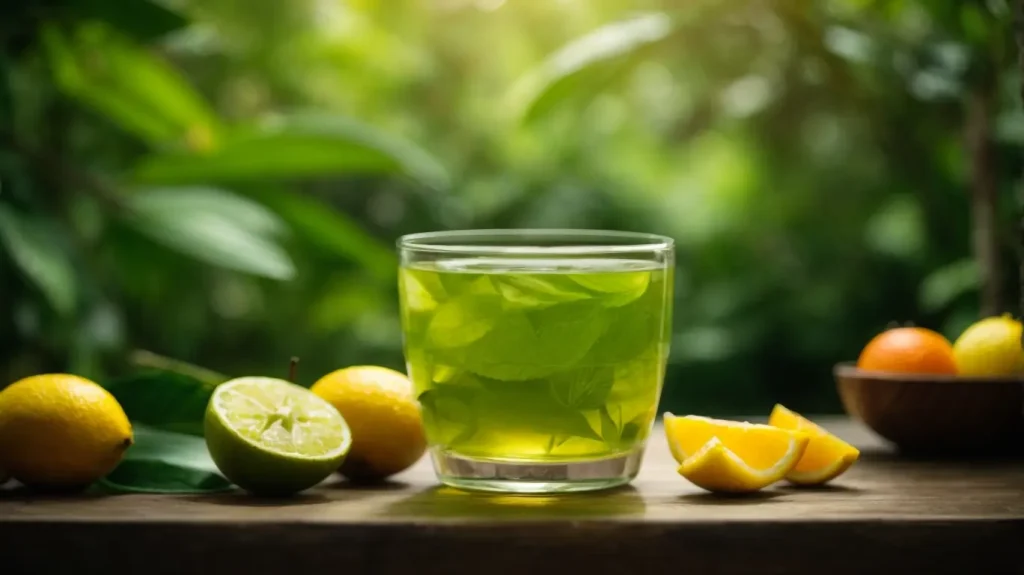
15, Why Do Different Brands of Green Tea Taste Different?
Not all green tea tastes the same. The brand, specific variety, where and how it was grown causes flavor differences.
The climate, soil conditions, sunlight, and elevation of tea plantations impacts taste. Processing methods, harvest times, and freshness also vary the flavor.
Trying green teas from different brands and regions lets you experience the range. Japanese greens often taste sweeter and more vegetable than nutty Chinese varieties for one example.
Ask sellers about sourcing and production methods to understand why a brand’s flavor profile stands out. Checking harvest dates helps ensure you choose the freshest teas as well. Part of green tea’s delight is exploring all the delicious complexities.
- Delicate Green Tea: 120 green tea bags of Bigelow Classic Green Tea, smooth and delicate signature green tea that is not…
16, How Do Filters Change How Green Tea Tastes?
Brewing green tea through different filters changes what compounds end up in your cup. This alters the flavor.
Paper filters help catch more sediment and bits of plant material. This results in cleaner, lighter tasting tea. But some beneficial oils and antioxidants get trapped too.
In contrast, infuser meshes and metal strainers allow more components to flow through. This makes a fuller-bodied, more robust cup. But small particles can slip past and cloud the tea if over-steeped.
Neither method is right or wrong. Try both paper and metal filters to decide which leaves behind your desired flavors and mouthfeel. Adjusting elements like water temperature and steeping times also helps extract your optimal taste with any filtration method.
17, How Does Storage Change Green Tea’s Flavor?
Improperly stored green tea slowly becomes less refreshing and enjoyable over time. Heat, air, light, and moisture break the leaves down.
Warm conditions cause faster moisture loss, which damages the cell structure. This alters the chemical composition, creating stale, dull flavors instead of brightness.
Exposure to air oxidized compounds, slowly changing the taste from floral, sweet, and grassy to cardboard-like. Light also speeds up bitter tannins releasing, overwhelming more delicate notes.
Storing green tea sealed in opaque airtight containers at cool room temperature preserves freshness the longest. Drink newer harvests first and aim to finish green tea within 6 months to a year before unfavorable changes set in.
18, Why Does Green Tea Taste Different After Traveling?
Bouncing around in luggage during travel can really alter green tea’s flavor. The motion breaks down the delicate leaves faster.
Exposure to temperature swings also stresses leaves. Going from hot airplane cargo to cool cabin air then back causes moisture loss and oxidation.
To best preserve taste, pack loose tea in air-tight containers and high quality bags with extra cushioning. Request refrigerated transport if possible. Or opt to purchase fresh teas at your destination instead.
Brewing green tea after travel may require adjusting ratios, steeping times, and temperatures to extract better flavor from the shaken leaves. Adding lemon or honey also helps liven up muted tastes.
19, Why Do Green Tea Leaves Taste Bitter When Chewed?
Green tea leaves contain bitter compounds called tannins. These defend the plant against insects and disease. When leaves are brewed in water, tannins infuse along with other flavors.
Chewing tea leaves releases extra tannins that steeping doesn’t extract.
So they taste very bitter and astringent directly crunched up. Other plant chemicals like catechins also taste quite tart on their own.
High quality green tea leaves have abundant tannins and catechins. This makes them taste more bitter when eaten raw. But it also means they will brew beautifully flavored and healthy tea. So savor the leaves in water, not direct from the garden.
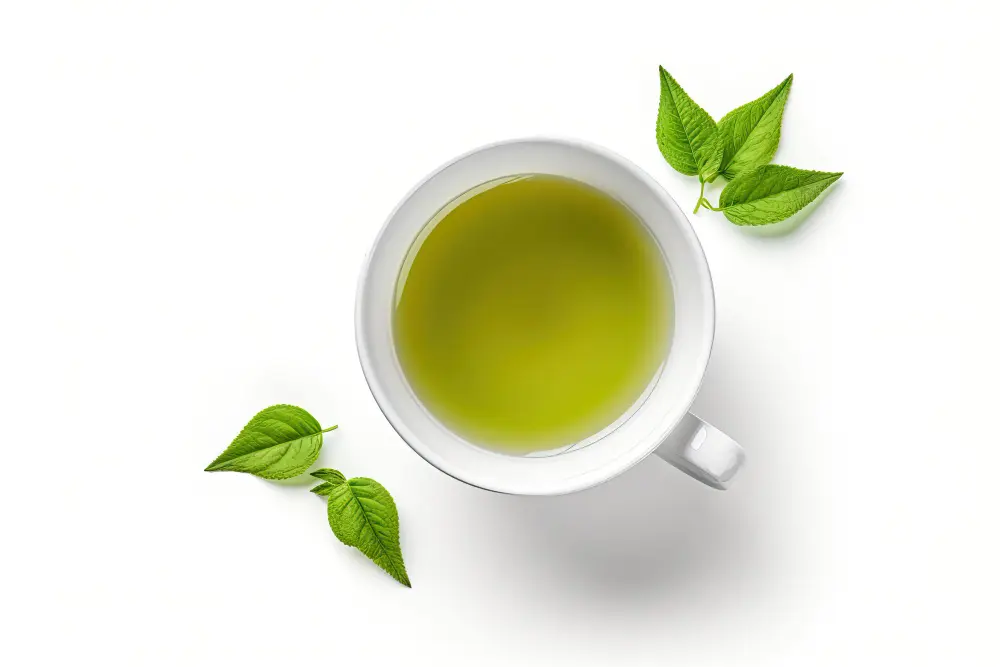
20, How Can I Fix Bad Tasting Green Tea?
Sometimes green tea doesn’t come out perfectly. But before tossing it, try a few quick fixes.
If it is too bitter, adding a teaspoon of honey balances out the harsh taste. For flat or watery tea, stir in a pinch of salt to amplify flavors. And squeezing lemon juice cuts bitterness while making it refreshing.
Adjusting the leaf-to-water ratio and steeping time for next batches also helps. Use more leaves for bolder flavor and steep for less time to prevent over-extraction if it tasted too harsh and grassy.
But if your tea smells stale, moldy, or completely foul, it is safest to compost it. Extremely funky odors indicate spoiled leaves that cannot be revived into an enjoyable cup of tea.
21, Why Does Some Green Tea Taste Spinach-y?
Certain healthy plant chemicals called amino acids give some green teas a vegetal, spinach-like flavor. These compounds also lend fresh-cut grass and floral notes when balanced well.
Higher quality green tea leaves contain more amino acids, which is ultimately desirable. But for some, too much can register as overly earthy or like raw spinach.
If you find a green tea has too much of the strong green veggie taste, you can mellow it out. Switching to a Japanese steamed sencha green balances out the spinach edge for a smoother cup. The extra processing gentles unwanted bold flavors.
You can also try gaba oolong tea, which is part oolong, part green tea. The unique production minimizes harsh vegetal notes while keeping refreshing floral and fruity tones.
22, Tips for Enjoying Green Tea’s Grassy Taste
Bright, grassy flavors in green tea come from antioxidants and plant chemicals. These notes range from fresh-cut lawn to spinach depending on the variety and harvest season.
If you find these vegetal tastes too intense, try pairing green tea with lemon. The citrus balances unwanted bitterness, letting sweeter notes shine. Adding a touch of honey also rounds out harshness.
Grassy green teas match well with herby and floral foods like peas, herbs, melon, and berries. The flavors complement rather than compete.
Brewing method also impacts taste. Shorter steeping muted bitterness for a smoother cup. And opting for Japanese steamed sencha tempers the grassy punch while retaining refreshing notes.
23, Why Does Some Green Tea Taste Hay-like?
Earthy, dried grass flavors in green tea come from oxidation. This is the natural process of leaves changing after harvest before being processed.
Green teas are either steamed or pan fired soon after picking to halt oxidation. But allowing a period of extra oxidation before stopping it develops more hay-like, woody notes.
Certain Chinese green teas are designed this way on purpose. But some overly earthy flavors can seem unpleasant or too strong.
Opting for steamed Japanese greens like sencha balances pleasant grassiness without dominant dried plant tastes. And roasted options like hojicha mute earthiness further for smooth, subtly sweet flavor instead.
24, How Can I Freshen Up Stale Green Tea?
Like other foods, green tea goes bad after a while. Improper storage exposes leaves to too much air, light, heat, or moisture. This causes stale, flat flavor instead of sweet and grassy tones.
If your green tea tastes dull, try brightening it up. Simply add some lemon juice or a pinch of salt to liven up the cup. The acidity and salinity amplify fading flavors. A bit of honey also balances out staleness.
But if the leaves smell moldy or funky, it’s best to compost them. Spoiled green tea can’t regain pleasant flavor. And old, oxidized leaves won’t have many health benefits either.
For future batches, drink green tea within 6 months to a year. Store leaves properly sealed away from air, light, heat, and moisture so they last at peak tasty freshness longer.
25, How Can I Strengthen Weak Tasting Green Tea?
Flat, weak green tea needs a flavor boost. The issue usually comes down to not using enough leaves or over-steeping time.
With loose leaf tea, use roughly 1 teaspoon of leaves per cup of water. Too little results in dull, watery tea. You can also try shortening the brewing time to 2 minutes instead of 3. This prevents over-extraction.
For bagged green tea, the leaf amount is pre-set. But you can still adjust time, stopping the steeping before it gets too potent. Play with ratios and timers to find your perfect balance of full flavor without unwanted bitterness.
And if your water tastes heavily filtered, try spring water instead. Good tasting mineral water allows the tea to extract better for full-bodied flavor in every refreshing sip.

